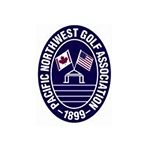
The Basics: The USGA Course Rating System is an enhancement of the USGA Handicap System and affects all OGA Members in the calculation of their Handicap Indexes. Although it can seem a bit complicated, the net result of the Course Rating System is that it allows a player to move from golf course to golf course and get a fair indication of their level of play, regardless of where they play, the set of tees or their ability level.
The Definitions:
- Scratch Golfer: A player who can play to a Course Handicap of zero on any and all rated golf courses. For rating purposes, the male scratch golfer hits a 250 yard tee shot and can reach a 470 yard hole in two shots at sea level. The female scratch can hit 210 off the tee and reach a 400 yard hole in two
- Bogey Golfer: A male bogey golfer has a Course Handicap of about 20 and can hit 200 off the tee, reaching a 370 yard hole in 2 shots. A female bogey golfer has a Course Handicap of about 22 and can hit 150 off the tee and can reach 280 yards in 2 shots
- USGA Course Rating: The evaluation of the overall difficulty of the golf course under normal course and weather conditions for the scratch golfer and is expressed in strokes taken to one decimal point (i.e. 72.6)
- Bogey Rating: The evaluation of the overall difficulty of the golf course under normal course and weather conditions for the bogey golfer and is also expressed in strokes taken to one decimal point (i.e. 102.4)
- USGA Slope Rating: The USGA’s mark that indicates the measurement of relative difficulty of a course for players who are NOT scratch golfers as compared to the Course Rating. Between 55 and 155, standard is 113.
The Process: Correct and accurate yardage is imperative to Course Rating. Once yardage is established, 10-12 trained Course Raters assess the golf course, one hole at a time. We take into account the landing zones, where the ball lands and rolls, for each of four players. Scratch and Bogey, Male and Female.
In each of the landing zones we measure… well, everything! All Obstacles are measured from the center of each landing zone. We consider the length of the shot, where the ball lands and how far it rolls. Does the player has to carry a hazard or extreme rough? Is it an up or downhill shot? Will a turn in the fairway necessitate a layup?
The Effective Playing Length (EPL) Corrections: While most of the rating is derived directly from the officially measured yardage, there are certain features of the course that can effectively change the length of a course. These include Elevation, Roll, Dogleg/Forced Lay-up, Wind and Altitude.
The Obstacles: Are a numerical evaluation of all obstacles on a golf course. Generally, the nearer the obstacles are to the center of the landing zone, the higher the rating values.
- Topography: The impact of terrain on stance, lie and the player’s ability to hit the next shot. (Click here for information about Topography)
- Fairway: The evaluation of the difficulty of landing and keeping a ball in the fairway from tee to green. (Click here for information about Fairway)
- Green Target: the probability of hitting and holding the green from a fairway landing zone or tee. The length of the shot as well as the size of the green determines these values. (Click here for information about Green Target)
- Recovery and Rough: If a player misses the green or fairway landing zone, how difficult will it be to recover. (More on Recoverability And Rough)
- Bunkers: The measurement of the effect bunkers have on play based upon their proximity to target areas and difficulty of recovery (More on Bunkers)
- Out of Bounds/Extreme Rough: How near or far is OB from the center of the landing zone? If it there is tall grass how likely will the player be able to find and then play their ball? (More on Out of Bounds/Extreme Rough)
- Water Hazards: Look at how much the water will come into play based upon its proximity to landing zone or green. Is the water beside the fairway, a 5 yard stream or a 100 yard pond that a player needs to carry? (More on Water)
- Trees: Measure of how close trees are to play and how difficult it is for the player to recover from the trees. (More on Trees)
- Green Surface: Is a measurement of the actual difficulty of putting on a green. Stimpmeter speed, slope and contouring are all factors (More on Green surface)
- Psychological: The system automatically calculates this factor based on the cumulative effect of multiple Obstacles and also gives an extra “bump” for the stresses of the first and last hole. (More on Psychological)
Course Rating Resources
![]() Tee It Forward
Tee It Forward
![]() Bogey Rating
Bogey Rating
![]() Tee to Green
Tee to Green
![]() Combo Tees
Combo Tees
![]() The Word "Slope"
The Word "Slope"
Course Handicap Calculator
If you have any additonal questions, please contact our Course Rating Department.








